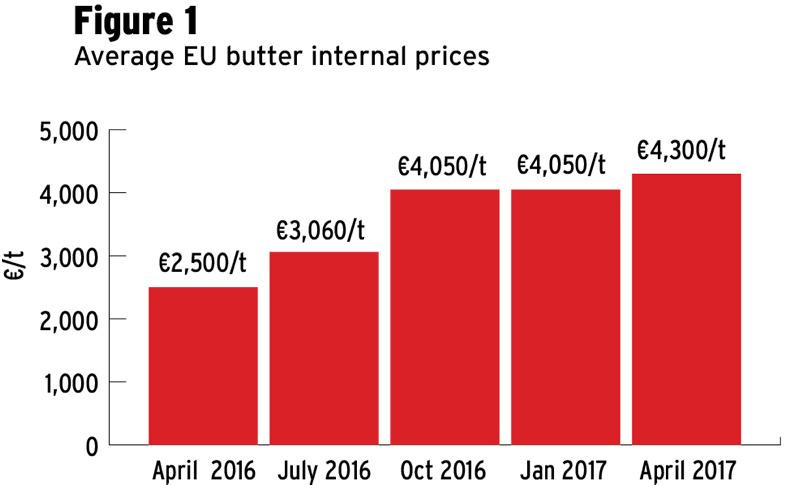
LOYALTY CODE:
The paper code cannot be redeemed when browsing in private/incognito mode. Please go to a normal browser window and enter the code there

LOYALTY CODE:
The paper code cannot be redeemed when browsing in private/incognito mode. Please go to a normal browser window and enter the code there
This content is copyright protected!
However, if you would like to share the information in this article, you may use the headline, summary and link below:
Title: Is there a butter shortage on the cards?
"Butter inventories are at their lowest since the 1980s. There is a general demand for butter, driven by the US."
https://www.farmersjournal.ie/is-there-a-butter-shortage-on-the-cards-277968

ENTER YOUR LOYALTY CODE:
The reader loyalty code gives you full access to the site from when you enter it until the following Wednesday at 9pm. Find your unique code on the back page of Irish Country Living every week.

CODE ACCEPTED

You have full access to farmersjournal.ie on this browser until 9pm next Wednesday. Thank you for buying the paper and using the code.

CODE NOT VALID
Please try again or contact us.
For assistance, call 01 4199525
or email subs@farmersjournal.ie
Sign in

Incorrect details
Please try again or reset password
If would like to speak to a member of
our team, please call us on 01-4199525
Reset
password
Please enter your email address and we
will send you a link to reset your password

If would like to speak to a member of
our team, please call us on 01-4199525
Link sent to
your email
address
![]()
We have sent an email to your address.
Please click on the link in this email to reset
your password. If you can't find it in your inbox,
please check your spam folder. If you can't
find the email, please call us on 01-4199525.
![]()
Email address
not recognised
There is no subscription associated with this email
address. To read our subscriber-only content.
please subscribe or use the reader loyalty code.
If would like to speak to a member of
our team, please call us on 01-4199525
 This is a subscriber-only article
This is a subscriber-only article
Update Success !
As demand for butter continues to outstrip supply, and with the price differential between dairy proteins and fats at record high levels, a butter shortage could be on the cards.
Ornua’s Joe Collins says that the butter market has moved into a new area in recent months.
“Supply and demand have moved in opposite directions – supply has been curtailed by reduced milk output, weakness in skim milk powder (SMP) returns and the syphoning off of cream into full fat products (milk, yoghurt and cheese) before reaching the churn,” Collins said.
“Demand for dairy fats including butter and cream has experienced strong growth in most geographies and sectors (retail, food service, food ingredients) in recent years.
“The growth drivers are taste, functionality and health benefits. Butter has moved from being the ‘health villain’ to the ‘health virtue’.”
He said that this shift has coincided with negativity regarding butter substitutes – margarines and vegetable oil products – including issues with health, sustainable sourcing and taste.
The current spot butter market is very firm, with prices at record levels which are not sustainable, Collins said.
“Supplies and stocks are currently very tight in Europe and Oceania. Customers who expected the market to weaken post-Easter and Ramadan have been caught short.
“The risk is that the high prices will drive output while leading to demand burn-off in both domestic and export markets on the back of reduced consumption and substitution.”
The increased demand for butter will help underpin dairy markets, keeping milk prices stable for dairy farmers.
Conor Mulvihill, director of the Irish Dairy Industries Association, said that butter is currently trading at between €4,100/t and €4,500/t, while skim milk powder (SMP), the byproduct of butter, is trading in the region of €1,800/t.

Overhang
Two tonnes of SMP is generated from every 1t of butter produced. While volumes of SMP are trickling into intervention, there is still a significant overhang in the market which continues to cause concern to processors.
“That difference in price has never been at this level – it’s a record. Butter inventories are at their lowest since the 1980s. There is a general demand for butter, driven by the US.”
Dairy trends: GDT index rises to highest point in three years
SHARING OPTIONS: